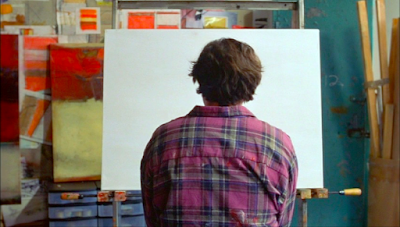
In search is a Christmas-y holiday we found ourselves in Stockholm this week and had the pleasure of visiting a couple of their galleries, one a small commercial space and the other one of the biggest public art museums. Loyal had an exhibition titled ‘Toys “r” Us by Louise Enhöring. The show consisted of 5 or 6 close up photographs of children’s toys, a fairly simple premise but the images themselves were aesthetically interesting/thought provoking. There was the whole guessing game happening inside your head, attempting to piece together a puzzle when you’ve only been given half the pieces. However, the work was more about the idea of this synthetic adult world we’ve created for children; tiny cars, tiny ovens, even tiny people. This seemed fairly reasonable, if not slightly cliché. We couldn’t shake the feeling that actually they were just nice looking photographs that they hoped would sell. Not that that’s a crime, they sure would look nice about the mantel piece where great aunt Ruth’s urn sits (RIP-in-peace), but perhaps a bit more could’ve been done to support the thinking behind it.

Our next stop was Moderna Musset, similar to Tate in London with regards to its size, content and the fact that it’s publicly funded. We took a look round the permanent collection which is always fun in any big art museum; getting a glimpse of the classic including perhaps 30 works by Marcel Duchamp. Another great aspect of this was that, again similar to Tate Britain, their collection goes through different time periods and consequently different movements in art history. We definitely find this process of reflection and hindsight hugely beneficial; the lineage of art is something that comes into our practice and general research fairly frequently. They also had a special exhibition on titled ‘THE NEW HUMAN’. It was exploring our human condition in a fast-changing world. How do we perceive and understand ourselves? How do we live, socialise, organise and control each other? And what kind of future awaits us? These are all the sorts of questions that appeared to be being thrown out there at the same time as offering insights into a global war-zone of religious fanaticism and political extremism but also highlight examples of solidarity and compassion. As we watched each film the content seemed to oscillate between the hysterically absurd and the deeply serious, almost as if it was like a metaphor for mankind skirting the borderline between ultimate disaster and the emergence of something new (which really summarises the whole show). It was a superb line up of artists including some favourites including Ed Atkins, Harun Farocki, Frances Stark, Hito Steyerl, Superflex and Ryan Trecartin. The Superflex film was not one we were aware of and was certainly in the top of our list. It was called ‘The Financial Crisis (Session I-IV)’ and it’s all about the financial crisis and meltdown from a therapeutic perspective. A hypnotist guides you through your worst nightmares to reveal the crisis without as the psychosis within. During 4 sessions you experience the fascination of speculation and power, too fear, anxieties and frustration of loosing control, economic loss and personal disaster. In Session 1 "The Invisible Hand" you’re introduced to the backbone of capitalism, the idea of the 'invisible hand' as the benign faith in self-regulation that prevents markets and people from spinning out of economic control. Under hypnosis you are asked to interrogate that faith and to imagine a world no longer governed by the invisible hand. In the following Sessions we go deeper and deeper into the financial crisis. A truly thorough work and one that was genuinely thought-provoking but without being didactic in its delivery.

We’ve also got round to tweaking The SketchUp Residency website so go check that out >>>
here<<< if you have a second and read the press release for Bob Bicknell-Knight’s work. Also if you’re interested in taking part them please do email us for more information, the next open call will be published soon! Something else that’s now up is our interview in Art Reveal magazine so head over >>>
there<<< and give it a read.
















